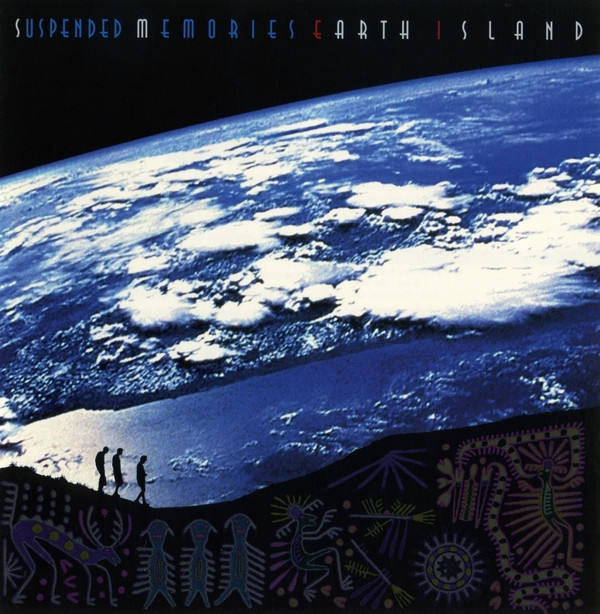Suspended Memories Defines The Essence Of “Musique Nouvelle” In The 90s
From the archives: Remember the supergroups? Sure you do!
(This review, written by Glenn Hammett, originally appeared in Issue 7, Spring 1996.)
Remember the supergroups? Sure you do! In the late 60s, if a musician had a successful backlog of material, or simply looked the part, he could combine his talent with others of similar rock-royalty status. After months of grooming and preparation, they would announce themselves to the world as the next best thing. Shortly thereafter, egos would flare and they’d break up (usually to form another, far superior supergroup-to-end-all-supergroups). Although some were less brilliant than a supernova, a few, like Led Zeppelin, managed to change the course of rock forever.
Three decades on and supergroups are still forming, the formula trickling down into musical areas outside the main ring of the media circus. Obviously then, this isn’t a review of Michael Jackson’s pairing with Slash. There was no fanfare with the release of Earth Island, no videos on MTV, no 30-foot statues floating up the East River, just a simple one-page press release. Still, Suspended Memories is a bonafide supergroup, one that managed to earn them (yikes!) New Age Recording of the Year from the National Association of Independent Record Distributors.
Coalescing the talents of Arizonian electronics virtuoso Steve Roach, Mexican ethno-ambient multi-instrumentalist Jorge Reyes, and Spain’s hypnotic guitarist Suso Saiz, Suspended Memories defines the essence of “Musique Nouvelle” in the 90s. No constraints. No compromise.
Roach, with almost two decades of solo and collaborative works, numbering in the dozens, is finally getting the recognition he deserves. If imitation is the sincerest form of flattery, Roach need look no further than the electronic section at Tower, teeming with Roachette wannabes. His signature sound, one of vast space filled with textured washes of sound, dense drones, and slowly cascading notes, reflects his love of the open landscape and big sky of the Southwest. Steve’s compositions are machine-driven, yet he manages to underscore his sound with a distinct organic element using an assortment of ethnic drums and bells, didgeridoo, and other sundry implements. Beautiful, rich, velvety, and warm, Roach’s work is an intricate tapestry of sound that makes subsequent listenings rewarding. His music is sonically, emotionally, and spiritually deep.
Where Roach’s work is electronic adorned with the acoustic, the opposite is true for Jorge Reyes, With over a dozen solo efforts, Reyes is the sublime Master of tribal ambient music. A sense of unearthed primordial memories, magic, and the “Other” permeates Reyes’ spiritual sound rituals. Inspired by the music of 10,000 years past, which was handed down through the generations by Mexican indigenous peoples, Reyes’ vision, a musical journey through time and space, is singular. Weaving his magic through his collection of thousands of authentic ancient instruments, Reyes has independently brought pre-Hispanic music into the view of the public eye. The sound-shamen creates for the listener a pure, undiluted peregrination to the “Logos,” a dimension of reality which most people don’t imagine exists. Many of today’s ethno-ambient artists cite Reyes as a key inspiration for the music they create. Listen to TUU, Voice Of Eye, or O Yuki Conjugate back to back with a Reyes CD and the influence comes into full focus.
The third member of this team, Suso Saiz, is so much in demand by artists that, were duplicating machines a reality, his would be locked into “overdrive.” Saiz’s guitar stylings mutate from heavy, distorted Hendrix-inspired riffs to the delicate, jazzy (yet cosmic) style of Ash Ra’s Manuel Göttsching to the hypnotic trances Robert Fripp invented on the Fripp and Eno collaborations. Saiz takes experimental guitar well into the 21st century.
What happens when these three sound-chasers meld is pure magic, a sonic dream-state: organic, pulsing, and alive, evocative of ancient times. Roach’s thick electronic atmospheres fill the space with unspeakable nebulous beauty and gauze-like textures that slowly drift in and out of the mix. Ethnic drums and shakers, played by Reyes, punctuate the soundspace adding drive and direction, his ethereal flute whispering from deep within the void. Reyes’ arcane chanting techniques, similar to that of Native Americans, lends an air of storytelling and ritual, giving the music further depth.
At times, Saiz’s guitar work nearly mirrors Roach’s keyboards, blending, yet twisting around the drones. On tracks such as the title cut, he lays down wavering jazz-inspired accompaniments. Each of the three very diverse artists manages to retain his own sonic identity all the while integrating perfectly with the others.
Does the above description do the music justice? No, it only gives you a general indication of the music’s basic direction and form, as would a review of one of Shostakovich’s brilliant masterpieces. And yes, I consider this music as much of an influence on new music as I would any pioneering compositions of yore.
The real treat is that Earth Island sets new sonic standards for new music recordings. Tracks five and seven, recorded at Roach’s Timeroom studio, aided by Audio Research, Pro-Ac, and Straightwire audio gear, are breathtaking. Keyboard sounds are clear and transparent. Drums come through with the weight and dynamics of the finest recordings. Micro-dynamics—such as the fingers on the drum skin—are left intact. The subtle nuances of the wind instruments and their required breathing techniques are rendered appropriately. Vocals, although at times treated with reverb, are as true and lifelike as digital allows. The soundstage, as mentioned before, is as big as the Arizona sky.
At the end of the day, it would seem then that this well-rounded recording offers up everything needed for the discriminating listener interested in new sounds. It also represents a great jump-off point for one to acquaint oneself with the musicians, and dig deeper into their vast catalog of releases.










































.png)








